I’d like this thread to be a compilation of research surrounding MDMA synthesis and purity trends over the years. Any new articles will be edited to the original post in chronological order.
UK 1992:
“Figure 8 shows the chromatogram of an extract of a typical sample. The reaction intermediates isosafrole glycol, PMK and N- formylMDMA were observed together with the reaction by-product DMMDA. This demonstrates that route I was used in the manufacture.” (GC Note: Route l being Leuckart Reduction.)
Switzerland 1995-1997:
An analysis of 450 samples found 59.8% MDMA, 16% MDEA, 13.5% Amphetamine and the rest various MDxx combinations of MDMA, MDA, MDEA and MBDB.
“In most of the tablets containing MDMA, the content is between 80 and 100 mg/tablet..”
Ireland 1999:
Number of occurrences of a drug from a total of 13 ‘ecstasy’ seizures in 1995–98 (major occurrence > 30mg, minor occurrence < 30mg); MDMA 9 major 2 minor, N-MePEA 5 and 2, MDEA 1 and 3, Amphetamine 1 and 0, MDA 1 and 1, Caffeine 1 and 0.
“Fig. 2 shows a chromatogram of a ‘Dove’ confiscated in 1995 which was found to contain 130 mg of MDMA and a trace amount of MDEA at 13.6 min. The mass spectrum of the MDMA is also shown in Fig. 2 with the molecular ion peak at m/z 193 and the characteristic peak at m/z 58. A ‘Dove’ tablet confiscated in 1996 contained 65 mg of MDEA and 20 mg of MDMA whilst a ‘Smiling Sun’ logo tablet confiscated in 1998 contained 4 mg of MDEA and 100 mg of an unknown component subsequently identified as N-methyl-1-phenylethylamine (N-MePEA). The unknown component had a retention time of 7.2 min and was present in many of the ecstasy tablets which were analysed. This compound was not in the Wiley or NIST libraries. The unknown compound was identified by reference to a published spectrum and by co-injection as N-methyl-1-phenylethylamine. N-MePEA was found in many of the samples described as ‘ecstasy’, an example of which is given in Fig. 3. This tablet contained no MDMA; it was mainly caffeine with 11.5 mg of amphetamine and also N-MePEA. These combinations have also been found in UK seizures.”
Hong Kong 2000-2001:
“Before 2000, most of the seized ecstasy tablets were found to contain only a single active ingredient such as MDMA, 3,4- methylenedioxyamphetamine (MDA), 1-(1,3-benzodioxol-5-yl)-2- butanamine (MBDB), or 3,4-methylenedioxyethylamphetamine (MDEA), and tablets containing a mixture of MDMA and MDEA were found only occasionally. However, since 2000 the composi- tion of the ecstasy tablets has undergone drastic changes, with tablets now often containing complex chemical compositions. Of note, increasing numbers of ecstasy tablets were found to contain nonamphetamine-type ingredients such as ketamine and caffeine. In some tablets, MDMA was not present, but methamphetamine ( MA) was instead used as the principal ingredient. In addition, for these MA tablets, different combinations of other drug ingredients such as ketamine, caffeine, diazepam, phenobarbital, chlorpromazine, and imipramine were commonly encountered.”
“Based on the percentage of the number of ecstasy tablets received in 2000 and 2001 (Fig. 2), MDMA tablets were the most commonly encountered. Yet the abundance of MDMA tablets decreased from 98% in 2000 to 71% in 2001. By contrast, there was a significant increase in MA and MDA tablets in 2000–2001: from 2 to 22% (MA) and from 1 to 6% (MDA). Tablets containing amphetamine contributed less than 1% of the total number of tablets being examined.”
“Although a majority of the ecstasy samples seized in Hong Kong were MDMA-only tablets, the number of tablets containing ke- tamine in addition to MDMA rose. In 2000, around 12% of the to- tal MDMA cases were found to contain ketamine in addition to MDMA (i.e., 125 cases out of a total of 1,023 cases). However, the figure rose significantly to 42% in 2001 (i.e., 413 cases out of 973 cases).”
“Among the 613 cases (with a total of 123,776 tablets) randomly taken for study in 2001, there were a total of 416 cases having been taken for GC-MS analyses. As laboratory policy, no GC-MS analysis was performed if a definitive FTIR matching of MDMA for a particular case was accomplished. Of the 416 cases taken for GC-MS analyses, a total of 341 cases were found to contain traces amounts of impurities such as 3,4-methylenedioxyphenyl- 2-propanone (MDP2P), 3,4-methylenedioxyphenyl-2-propanol (MDP), 3,4-methylenedioxybenzylamine (MDB) and/or piperonal. The presence of these impurities strongly suggested that the MDMA found in Hong Kong in 2001 was predominantly synthe- sized via the key intermediate, MDP2P, which in turn was prepared from piperonal.”
“Of the cases being studied in 2001, there were a total of 31 cases containing 292 tablets in red, green, or blue and bearing the same impressed logo of “HQ” on both sides. They were found to contain only MDMA dihydrogen phosphate as the principal drug based on GC-MS analysis. In these cases, it was found that the MDMA content was within the 36 to 43% range.”
Japan 2002:
“We have investigated 100 Amphetamine-type stimulant tablets seized in Japan…. The maximum content of MDMA was 189mg and for MDA 87mg. Other detected components; MDEA, Ketamine, caffeine, ephedrine and methamphetamine.”
“MDMA content range 54-189mg, MDA 68-87mg, one tablet contained MDEA at 89mg.”
France 2002:
“According to these results, the reductive amination route appears to be the most common synthetic pathway in Western Europe. Furthermore, 3,4-methylenedioxyphenyl-2-propanone seems to be the most used precursor in clandestine laboratories.”
“The most common impurity found is 3,4-MDP-2-P: compound no.°10. Thus, 75% (39) of analyzed samples con- tained this important product, confirming that MDMA syntheses based on this precursor are those most used by clandestine laboratories in Western Europe.”
We report here two examples of the application of profil- ing analyses. The first cases linked via impurity profiling concern two seizures of MDMA tablets. In April 2001, 1500 “Euro” tablets were seized in the East of France, near the German border. One month later, in the same area, 750 “Batman” tablets were found, again during a traffic control. There was no particular reason to link these seizures because no similarities were observed in their physical parameters. In addition to their different logos, their masses, diameters, thicknesses and MDMA contents were not comparable. In contrast, the impurity profiles of the two samples were identical (part d of Fig. 4), showing that these tablets might well have originated from the same synthetic batch.
Another interesting example concerns four seizures of “Mitsubishi” tablets. These seizures, made between September 1999 and March 2000, contained 52, 3000, 2000, and 200,000 tablets respectively. Physical parameters were used to divide these seizures into two groups of tablets weighing 345 and 285 mg. All the seizures were made in the North of France; two near the Belgian border, one in a train to Paris and the other in a truck, indicated as going to England. These samples were analyzed by chromatography, and the comparison of the four impurity profiles suggests that all the tablets may have come from a single major clandestine laboratory. The four profiles obtained correspond to chromatogram e in Fig. 4. (GC Note: Indicative of Leuckart) Other Mitsubishi tablets seized in the same period in Paris gave profiles similar to part c of Fig.4, showing that this sample might have come from a different network.”
Netherlands 2006:
“The sample collection consisted of a unique set of MDMA powders (57) from illicit production sites and MDMA tablets (97) taken from large seizures (over 500 tablets) in the Netherlands. The production method of MDMA could be determined for 89 of the 97 tablets. In 84 cases reductive amination using Pt as the catalyst was used, in four cases reductive amination using NaBH4or a similar reducing agent was employed and one mixed sample (Pt and B) was found. None of the MDMA tablets were assigned to the aluminium amalgam method.”
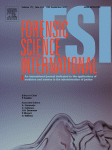
 www.sciencedirect.com
www.sciencedirect.com
Iran 2007-2008:
“The range of tablets weight was 96–308 mg and the range of 3,4-methylenedioxymethamphetamine (MDMA) hydrochloride content in these tablets was 60–180 mg. No good correlation was found between the tablets weight and their MDMA contents. All of the tablets containing MDMA had this compound in hydrochloride form. Ketamine, phenmetrazine and ephedrine (or pseudoephedrine) were found in some of the tablets along with MDMA.”

 www.ncbi.nlm.nih.gov
www.ncbi.nlm.nih.gov
Various Countries 2010:
Principal component analysis revealed clustering of samples according to the country of origin. Samples from Macedonia were elevated in N-formyl-MDMA and N-acetyl-MDMA while samples from Australia were elevated in 3,4-methylenedioxypropane and 3,4-methylenedioxyacetophenone. Furthermore, three components were found to be unique for one of the source countries.
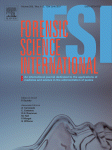
 www.sciencedirect.com
www.sciencedirect.com
Jakarta 2012:
“We took 54 of ecstasy tablets in this study.”
“Forty three tablets contained amphethmine derivate and 24 tablets contained MDMA as the sole active ingridient. Ketamine was found in 9 tablets.”
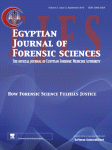
 www.sciencedirect.com
www.sciencedirect.com
Turkey 2014:
“The boron and platinum values given in Table II probably attract the most attention. It was found that of the 49 samples, 30 samples contained Pt residuals, 2 samples contained both Pt and boron residuals, 6 samples contained boron residuals, and 11 samples contained neither boron nor Pt residuals.”
“..the measurement of Pt residuals from PtO2 (which is frequently used as the catalyst during the synthesis stage of the
active substance..”
“The determination of boron residuals revealed that NaBH4 was used in the production process.”
Aus 2018:
“Purity of primary drugs ranged from ∼30% for cocaine, 2-CB and GHB to >90% for THC, methamphetamine, heroin and MDMA. Methamphetamine and MDMA contained the largest variety of impurities: 22 and 18 variants, respectively.”
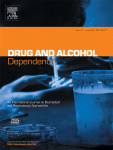
 www.sciencedirect.com
www.sciencedirect.com
SW England 2019:
“26 tablets belonging to 11 different brands of MDMA seized from different dance venues in the Southwest of England were quantified by 1H q-NMR and confirmed by UHPLC using a Variable Wavelength Detector (VWD) and UHPLC-MS.”
“Also shown are 1H NMR spectra (in D2O) of other seized MDMA samples cut or contaminated, e.g., with its dimethyl analogue, N,N-dimethyl-3,4-methylenedioxyamphetamine (MDDMA), reported to be found in MDMA samples synthesized through a nitropropene and reductive amination route…. ….Quantitatively, MDDMA comprised 10% of the sample.”
(GC Note: Upon averaging the pills analyzed we come to an average of ~112mg per tablet.)
Czech Republic 2021:
“The obtained results show that most of the seized tablets contained MDMA as a racemate.”
“Last but not least, the ECD spectra of the seized tablets were measured, and it was found that 11 of the 12 tablets contained a racemic mixture of MDMA. However, the content of (R)-enantiomer of MDMA was 63.6 % in case of tablet G. The standard deviations were in the range of 3.4–4.8% for all analyzed tablets.”
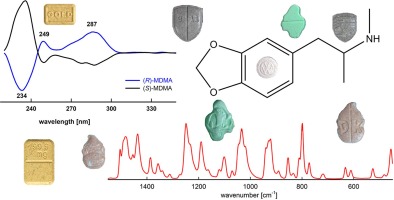
 www.sciencedirect.com
www.sciencedirect.com
Germany 2022:
“Whereas all samples of amphetamine and MDMA were racemic mixtures…”
Lots more to add later!
-GC
UK 1992:
“Figure 8 shows the chromatogram of an extract of a typical sample. The reaction intermediates isosafrole glycol, PMK and N- formylMDMA were observed together with the reaction by-product DMMDA. This demonstrates that route I was used in the manufacture.” (GC Note: Route l being Leuckart Reduction.)
Switzerland 1995-1997:
An analysis of 450 samples found 59.8% MDMA, 16% MDEA, 13.5% Amphetamine and the rest various MDxx combinations of MDMA, MDA, MDEA and MBDB.
“In most of the tablets containing MDMA, the content is between 80 and 100 mg/tablet..”
Ireland 1999:
Number of occurrences of a drug from a total of 13 ‘ecstasy’ seizures in 1995–98 (major occurrence > 30mg, minor occurrence < 30mg); MDMA 9 major 2 minor, N-MePEA 5 and 2, MDEA 1 and 3, Amphetamine 1 and 0, MDA 1 and 1, Caffeine 1 and 0.
“Fig. 2 shows a chromatogram of a ‘Dove’ confiscated in 1995 which was found to contain 130 mg of MDMA and a trace amount of MDEA at 13.6 min. The mass spectrum of the MDMA is also shown in Fig. 2 with the molecular ion peak at m/z 193 and the characteristic peak at m/z 58. A ‘Dove’ tablet confiscated in 1996 contained 65 mg of MDEA and 20 mg of MDMA whilst a ‘Smiling Sun’ logo tablet confiscated in 1998 contained 4 mg of MDEA and 100 mg of an unknown component subsequently identified as N-methyl-1-phenylethylamine (N-MePEA). The unknown component had a retention time of 7.2 min and was present in many of the ecstasy tablets which were analysed. This compound was not in the Wiley or NIST libraries. The unknown compound was identified by reference to a published spectrum and by co-injection as N-methyl-1-phenylethylamine. N-MePEA was found in many of the samples described as ‘ecstasy’, an example of which is given in Fig. 3. This tablet contained no MDMA; it was mainly caffeine with 11.5 mg of amphetamine and also N-MePEA. These combinations have also been found in UK seizures.”
Hong Kong 2000-2001:
“Before 2000, most of the seized ecstasy tablets were found to contain only a single active ingredient such as MDMA, 3,4- methylenedioxyamphetamine (MDA), 1-(1,3-benzodioxol-5-yl)-2- butanamine (MBDB), or 3,4-methylenedioxyethylamphetamine (MDEA), and tablets containing a mixture of MDMA and MDEA were found only occasionally. However, since 2000 the composi- tion of the ecstasy tablets has undergone drastic changes, with tablets now often containing complex chemical compositions. Of note, increasing numbers of ecstasy tablets were found to contain nonamphetamine-type ingredients such as ketamine and caffeine. In some tablets, MDMA was not present, but methamphetamine ( MA) was instead used as the principal ingredient. In addition, for these MA tablets, different combinations of other drug ingredients such as ketamine, caffeine, diazepam, phenobarbital, chlorpromazine, and imipramine were commonly encountered.”
“Based on the percentage of the number of ecstasy tablets received in 2000 and 2001 (Fig. 2), MDMA tablets were the most commonly encountered. Yet the abundance of MDMA tablets decreased from 98% in 2000 to 71% in 2001. By contrast, there was a significant increase in MA and MDA tablets in 2000–2001: from 2 to 22% (MA) and from 1 to 6% (MDA). Tablets containing amphetamine contributed less than 1% of the total number of tablets being examined.”
“Although a majority of the ecstasy samples seized in Hong Kong were MDMA-only tablets, the number of tablets containing ke- tamine in addition to MDMA rose. In 2000, around 12% of the to- tal MDMA cases were found to contain ketamine in addition to MDMA (i.e., 125 cases out of a total of 1,023 cases). However, the figure rose significantly to 42% in 2001 (i.e., 413 cases out of 973 cases).”
“Among the 613 cases (with a total of 123,776 tablets) randomly taken for study in 2001, there were a total of 416 cases having been taken for GC-MS analyses. As laboratory policy, no GC-MS analysis was performed if a definitive FTIR matching of MDMA for a particular case was accomplished. Of the 416 cases taken for GC-MS analyses, a total of 341 cases were found to contain traces amounts of impurities such as 3,4-methylenedioxyphenyl- 2-propanone (MDP2P), 3,4-methylenedioxyphenyl-2-propanol (MDP), 3,4-methylenedioxybenzylamine (MDB) and/or piperonal. The presence of these impurities strongly suggested that the MDMA found in Hong Kong in 2001 was predominantly synthe- sized via the key intermediate, MDP2P, which in turn was prepared from piperonal.”
“Of the cases being studied in 2001, there were a total of 31 cases containing 292 tablets in red, green, or blue and bearing the same impressed logo of “HQ” on both sides. They were found to contain only MDMA dihydrogen phosphate as the principal drug based on GC-MS analysis. In these cases, it was found that the MDMA content was within the 36 to 43% range.”
Japan 2002:
“We have investigated 100 Amphetamine-type stimulant tablets seized in Japan…. The maximum content of MDMA was 189mg and for MDA 87mg. Other detected components; MDEA, Ketamine, caffeine, ephedrine and methamphetamine.”
“MDMA content range 54-189mg, MDA 68-87mg, one tablet contained MDEA at 89mg.”
France 2002:
“According to these results, the reductive amination route appears to be the most common synthetic pathway in Western Europe. Furthermore, 3,4-methylenedioxyphenyl-2-propanone seems to be the most used precursor in clandestine laboratories.”
“The most common impurity found is 3,4-MDP-2-P: compound no.°10. Thus, 75% (39) of analyzed samples con- tained this important product, confirming that MDMA syntheses based on this precursor are those most used by clandestine laboratories in Western Europe.”
We report here two examples of the application of profil- ing analyses. The first cases linked via impurity profiling concern two seizures of MDMA tablets. In April 2001, 1500 “Euro” tablets were seized in the East of France, near the German border. One month later, in the same area, 750 “Batman” tablets were found, again during a traffic control. There was no particular reason to link these seizures because no similarities were observed in their physical parameters. In addition to their different logos, their masses, diameters, thicknesses and MDMA contents were not comparable. In contrast, the impurity profiles of the two samples were identical (part d of Fig. 4), showing that these tablets might well have originated from the same synthetic batch.
Another interesting example concerns four seizures of “Mitsubishi” tablets. These seizures, made between September 1999 and March 2000, contained 52, 3000, 2000, and 200,000 tablets respectively. Physical parameters were used to divide these seizures into two groups of tablets weighing 345 and 285 mg. All the seizures were made in the North of France; two near the Belgian border, one in a train to Paris and the other in a truck, indicated as going to England. These samples were analyzed by chromatography, and the comparison of the four impurity profiles suggests that all the tablets may have come from a single major clandestine laboratory. The four profiles obtained correspond to chromatogram e in Fig. 4. (GC Note: Indicative of Leuckart) Other Mitsubishi tablets seized in the same period in Paris gave profiles similar to part c of Fig.4, showing that this sample might have come from a different network.”
Netherlands 2006:
“The sample collection consisted of a unique set of MDMA powders (57) from illicit production sites and MDMA tablets (97) taken from large seizures (over 500 tablets) in the Netherlands. The production method of MDMA could be determined for 89 of the 97 tablets. In 84 cases reductive amination using Pt as the catalyst was used, in four cases reductive amination using NaBH4or a similar reducing agent was employed and one mixed sample (Pt and B) was found. None of the MDMA tablets were assigned to the aluminium amalgam method.”

Elemental analysis of 3,4-methylenedioxymethamphetamine (MDMA): A tool to determine the synthesis method and trace links
The elemental composition of 3,4-methylenedioxymethamphetamine (MDMA) powders and tablets was determined. The objective was the identification of the …
Iran 2007-2008:
“The range of tablets weight was 96–308 mg and the range of 3,4-methylenedioxymethamphetamine (MDMA) hydrochloride content in these tablets was 60–180 mg. No good correlation was found between the tablets weight and their MDMA contents. All of the tablets containing MDMA had this compound in hydrochloride form. Ketamine, phenmetrazine and ephedrine (or pseudoephedrine) were found in some of the tablets along with MDMA.”

Profiling of Ecstasy Tablets Seized in Iran
In this study 50 samples of ecstasy tablets seized in Iran during the period of 2007 through 2008 were examined and their physical characteristics (appearance, marking, scored/not scored, color, weight, diameter, thickness) were determined. In order to ...
Various Countries 2010:
Principal component analysis revealed clustering of samples according to the country of origin. Samples from Macedonia were elevated in N-formyl-MDMA and N-acetyl-MDMA while samples from Australia were elevated in 3,4-methylenedioxypropane and 3,4-methylenedioxyacetophenone. Furthermore, three components were found to be unique for one of the source countries.

Chemical signature of ecstasy volatiles by comprehensive two-dimensional gas chromatography
A method for ecstasy volatiles ‘signature’ analysis based on two-dimensional gas chromatography separation and time-of-flight mass spectrometry detect…
Jakarta 2012:
“We took 54 of ecstasy tablets in this study.”
“Forty three tablets contained amphethmine derivate and 24 tablets contained MDMA as the sole active ingridient. Ketamine was found in 9 tablets.”

Chemical profiling of ecstasy recovered from around Jakarta by High Performance Thin Layer Chromatography (HPTLC)-densitometry
In the current study, we identify the use of HPTLC-densitometry and cluster analysis of major substances in profiling seized ecstasy tablets from arou…
Turkey 2014:
“The boron and platinum values given in Table II probably attract the most attention. It was found that of the 49 samples, 30 samples contained Pt residuals, 2 samples contained both Pt and boron residuals, 6 samples contained boron residuals, and 11 samples contained neither boron nor Pt residuals.”
“..the measurement of Pt residuals from PtO2 (which is frequently used as the catalyst during the synthesis stage of the
active substance..”
“The determination of boron residuals revealed that NaBH4 was used in the production process.”
Aus 2018:
“Purity of primary drugs ranged from ∼30% for cocaine, 2-CB and GHB to >90% for THC, methamphetamine, heroin and MDMA. Methamphetamine and MDMA contained the largest variety of impurities: 22 and 18 variants, respectively.”

Multi-drug cocktails: Impurities in commonly used illicit drugs seized by police in Queensland, Australia
Impurities in commonly used illicit drugs raise concerns for unwitting consumers when pharmacologically active adulterants, especially new psychoactiv…
SW England 2019:
“26 tablets belonging to 11 different brands of MDMA seized from different dance venues in the Southwest of England were quantified by 1H q-NMR and confirmed by UHPLC using a Variable Wavelength Detector (VWD) and UHPLC-MS.”
“Also shown are 1H NMR spectra (in D2O) of other seized MDMA samples cut or contaminated, e.g., with its dimethyl analogue, N,N-dimethyl-3,4-methylenedioxyamphetamine (MDDMA), reported to be found in MDMA samples synthesized through a nitropropene and reductive amination route…. ….Quantitatively, MDDMA comprised 10% of the sample.”
(GC Note: Upon averaging the pills analyzed we come to an average of ~112mg per tablet.)
Czech Republic 2021:
“The obtained results show that most of the seized tablets contained MDMA as a racemate.”
“Last but not least, the ECD spectra of the seized tablets were measured, and it was found that 11 of the 12 tablets contained a racemic mixture of MDMA. However, the content of (R)-enantiomer of MDMA was 63.6 % in case of tablet G. The standard deviations were in the range of 3.4–4.8% for all analyzed tablets.”

Ecstasy tablets: Rapid identification and determination of enantiomeric excess of MDMA
The consumption of psychoactive substances is a worldwide problem and the sheer number of their seizures is alarming. These substances also include th…
Germany 2022:
“Whereas all samples of amphetamine and MDMA were racemic mixtures…”
Lots more to add later!
-GC
Last edited:


